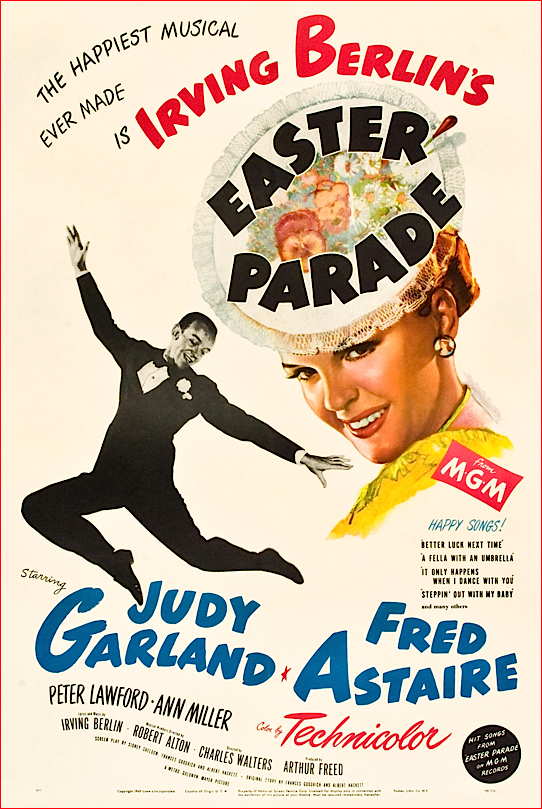

Easter Paradeshave been around since, well, the first Easter: "The first was on Palm Sunday as Jesus was welcomed to Jerusalem by an adoring throng. The second took place as Jesus carried a cross to Calvary."
These parades persisted as holy processions through the Middle Ages and up to the modern era when they became, especially in America, much more secular:
In 1873, a newspaper report about Easter at Christ Church said "More than half the congregation were ladies, who displayed all the gorgeous and marvelous articles of dress,... and the appearance of the body of the church thus vied in effect and magnificence with the pleasant and tasteful array of flowers which decorated the chancel."
By the 1880s, the Easter parade had become a vast spectacle of fashion and religious observance, famous in New York and around the country. It was an after-church cultural event for the well-to-do—decked out in new and fashionable clothing, they would stroll from their own church to others to see the impressive flowers (and to be seen by their fellow strollers).People from the poorer and middle classes would observe the parade to learn the latest trends in fashion.
By 1890, the annual procession held an important place on New York's calendar of festivities and had taken on its enduring designation as "the Easter parade." == La Wik
Thanks to reader Bill Jones we have this clip, "The Original Easter 'Parade' along 5th Avenue in 1900." That's a long, long time back and the advent of film gets us there and into that lost time, but just barely. We note in passing that the unknown and uncredited cinematographer seems to have an affinity for the female backside in these bustling Easter gowns.
The ultimate Easter Parade was, of course, the Hollywood version of 1949 staring Fred Astaire and Judy Garland. Here's the signature song about the route to the rotogravure:
That's the tune that everyone recalls, but for my money the finest bit of dancing on parade in this film occurs later when Astaire, in collaboration with some very advanced notions of experimental film making on the part of his director, comes up with this mind boggling bit of celluloid magic.
The routine begins as a sort of standard tap and buck and wing dance. Polished in its own way but then it shifts into what can only be described as an alternate reality. Watch closely and remember this was conceived and shot in 1949.
Now that doesn't really match the Resurrection, but for a movie from the 1940s it comes close to a miracle.
As for me, well, I love a parade. Especially when I and everyone else can be in it. Which is, after all, the point of the Easter Parade.
Long may we strut!
Posted by gerardvanderleun at April 5, 2015 7:57 PM